18 Wild Animals in Malawi [Wildlife in Malawi]
Want to know more about the wildlife in Malawi?
Discover 18 wild animals in Malawi in this post, as well as interesting facts about them. 🇲🇼
Learn All About Malawian Animals
Ready to learn all about Malawian animals?
I’ve always been fascinated by animals and by how they can be so different from one country to another. In this guide, we’ll focus on the many animals Malawi has on the land, in the sky, and underwater.
I’ve split the guide into 4 categories:
- Native animals from Malawi
- Endangered animals of Malawi
- What is Malawi national animal?
- How many animals native to Malawi?
Let’s dive in right away with our first category!
Native Animals from Malawi
Malawi is a small, landlocked African country located in the southern part of the continent, next to Lake Malai. It is one of the smallest countries in all of Africa, is one of the least-developed countries in the world, and used to be a British colony. It is bordered by Zambia, Mozambique, and Tanzania, and its capital and largest city is Lilongwe, which counts more than 989,000 inhabitants.
An interesting part of the country that I wanted to tackle is its wildlife. In light of that, I have listed the best of it, and I hope you will love learning what animals live in Malawi.
Here’s the Malawi animals list.
1. African bush elephant
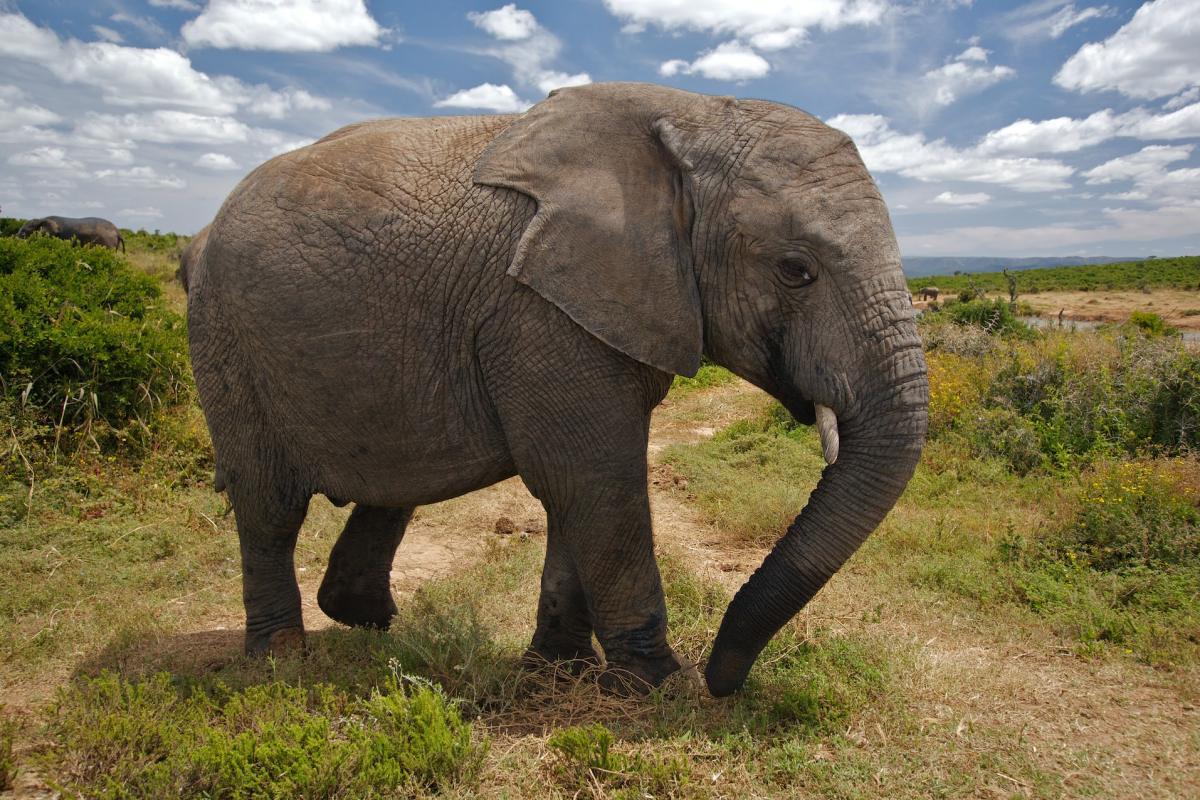
- Name: African bush elephant
- Scientific name: Loxodonta africana
- Conservation status:
The African bush elephant, also known as the African savanna elephant, is one of two species of elephant on the continent. It is the largest terrestrial mammal, reaching a shoulder height of up to 3.96 m / 13 ft. This social mammal gathers in herds and feeds on grasses, herbs, creepers, bark, and leaves.
This mammal has been listed as endangered since 2021, and its biggest threats are poaching for meat and ivory and habitat destruction.
2. Southern African lion
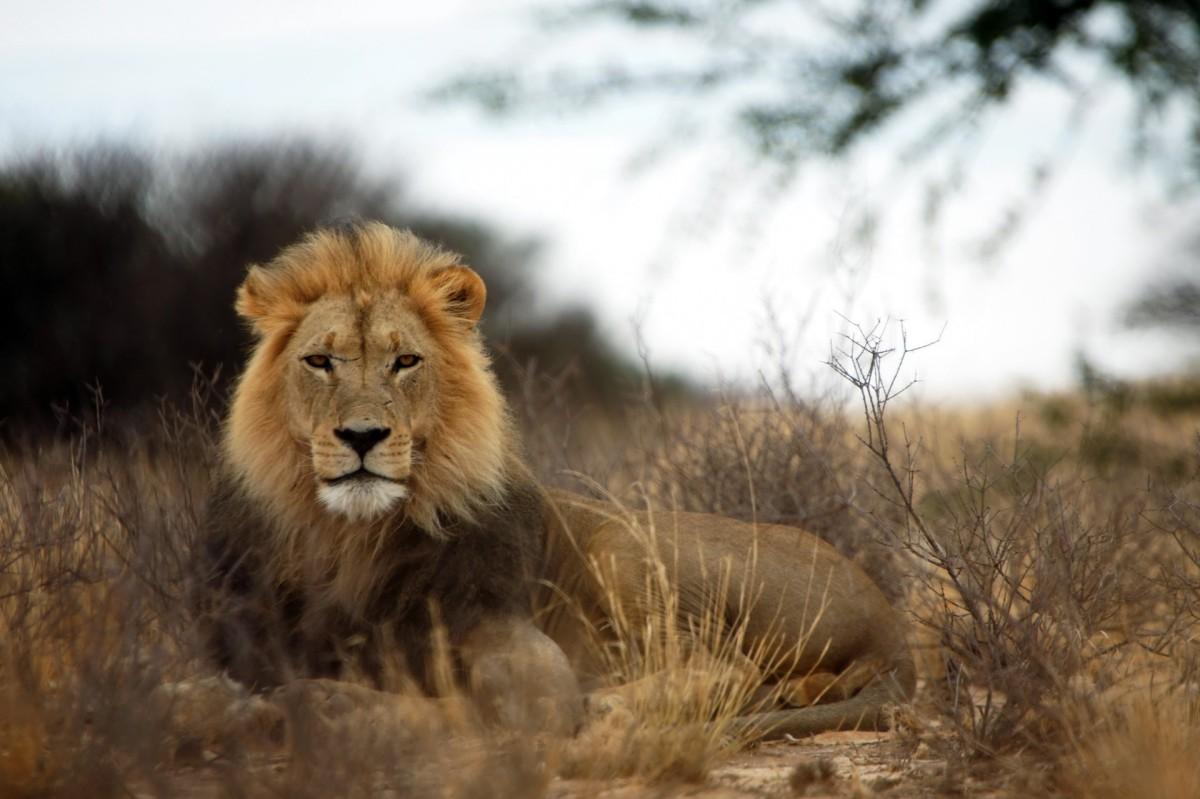
- Name: Southern African lion
- Scientific name: Panthera leo melanochaita
- Conservation status:
The Southern African lion is a subspecies of the lion that can be found in southern and eastern Africa. It is considered vulnerable to extinction because of persecution in retaliation for the loss of livestock, trophy hunting, depletion of prey, and habitat loss.
Interestingly enough, the king of the animals does not always have a mane, and can even be white, although these specimens disappeared from the wild during the 1970s.
3. African leopard
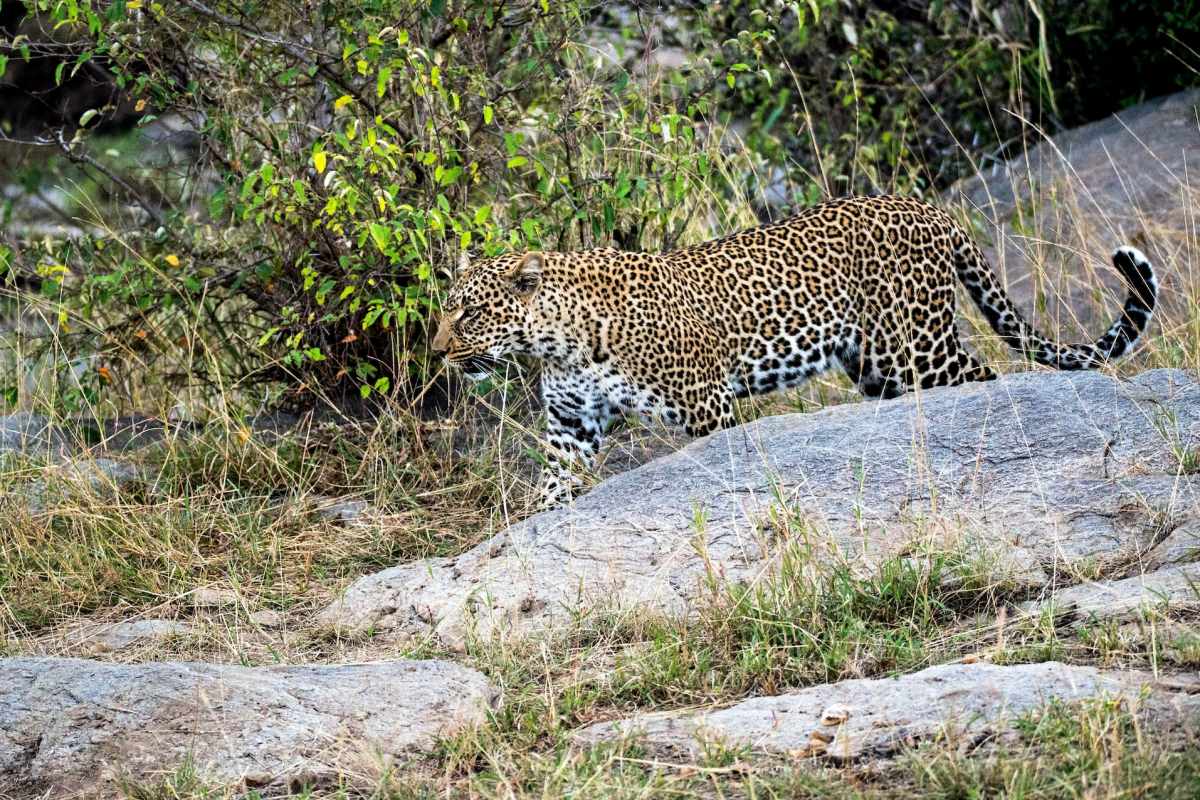
- Name: African leopard
- Scientific name: Panthera pardus pardus
- Conservation status:
The African leopard is the subspecies of the leopard native to many countries of sub-Saharan Africa. However, although once widespread throughout much of the continent, its range has greatly shrunk over the decades, and its populations are now scattered across all of Africa.
This leopard inhabits a wide range of areas, from savannas and grasslands to mountainous forests, avoiding only extremely sandy deserts. It is a highly adaptable animal that can change its diet depending on prey availability but usually feeds on large ungulates such as antelopes and elands.
4. African buffalo
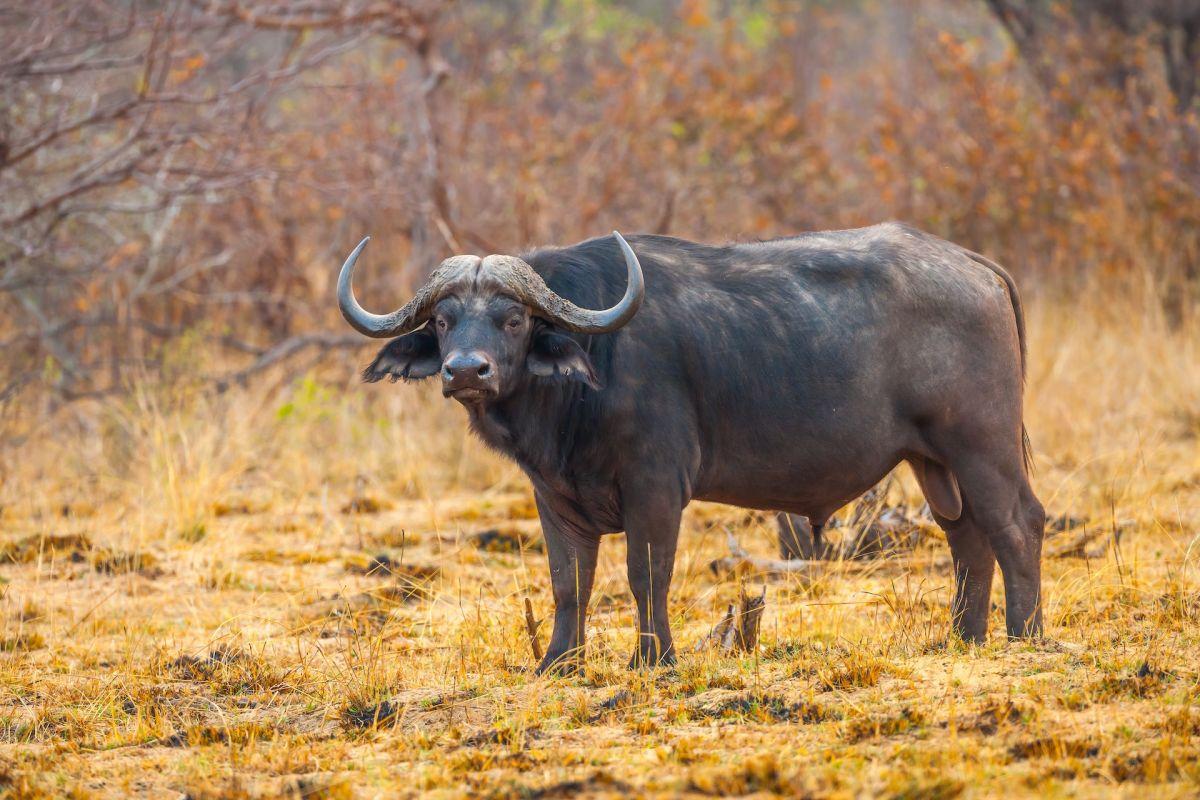
- Name: African buffalo
- Scientific name: Syncerus caffer
- Conservation status:
The African buffalo is a large species of bovine native to much of sub-Saharan Africa. It has large horns that form a continuous bone shield across the top of its head, and is widely known as one of the most dangerous animals in Africa, trampling, goring, and killing more than 200 people every year!
Despite its looks, it is not the living ancestor of domestic cattle and is not related to other larger bovine. It has never been domesticated because of its unpredictable, aggressive temperament.
5. Hippopotamus
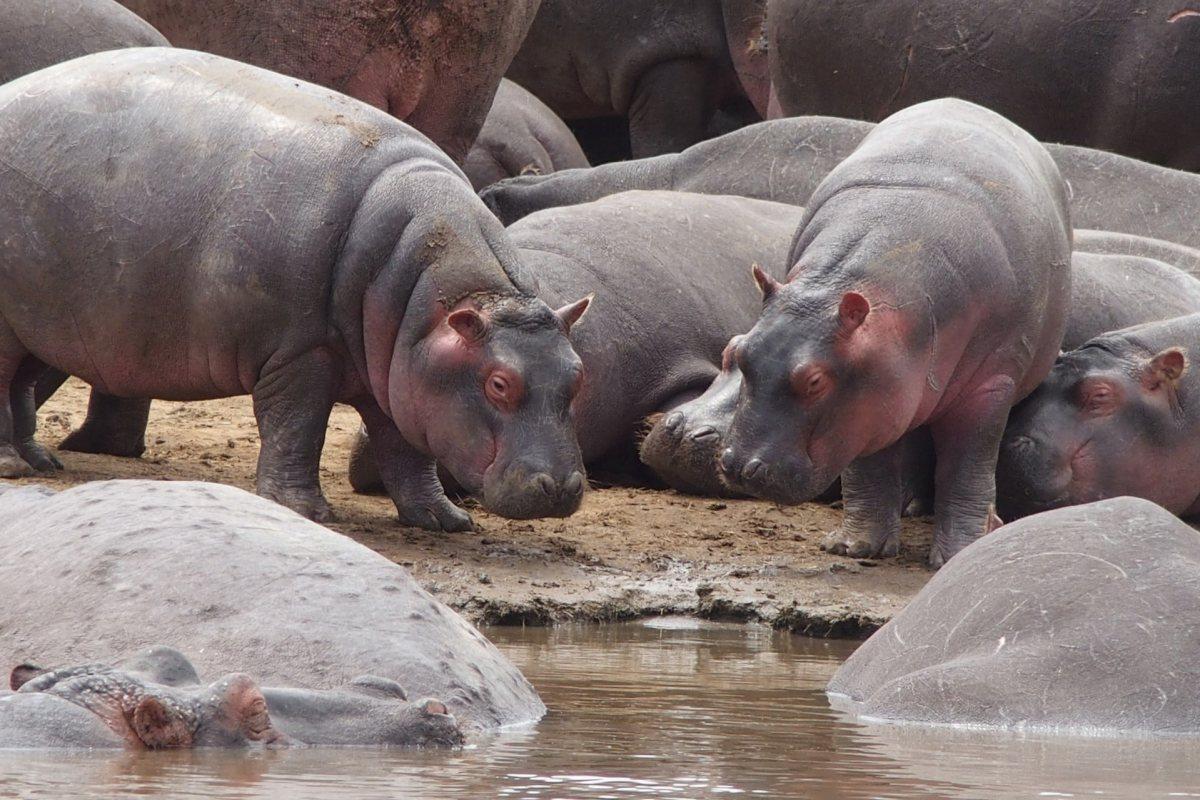
- Name: Hippopotamus
- Scientific name: Hippopotamus amphibius
- Conservation status:
Speaking of dangerous animals, here is the hippopotamus, also known as the common hippopotamus, the river hippopotamus, or simply the hippo. Not only is it one of the most dangerous animals on the continent, but also in the entire world: it is incredibly aggressive and unpredictable, and can run at 30 km/h / 19 mph despite its average weight of 1,500 kg / 3,310 lb (for males)!
The hippo inhabits lakes, rivers, and mangrove swamps and feeds on grasses. It spends a lot of its time in the water and is therefore considered a semi-aquatic mammal.
6. Black rhinoceros
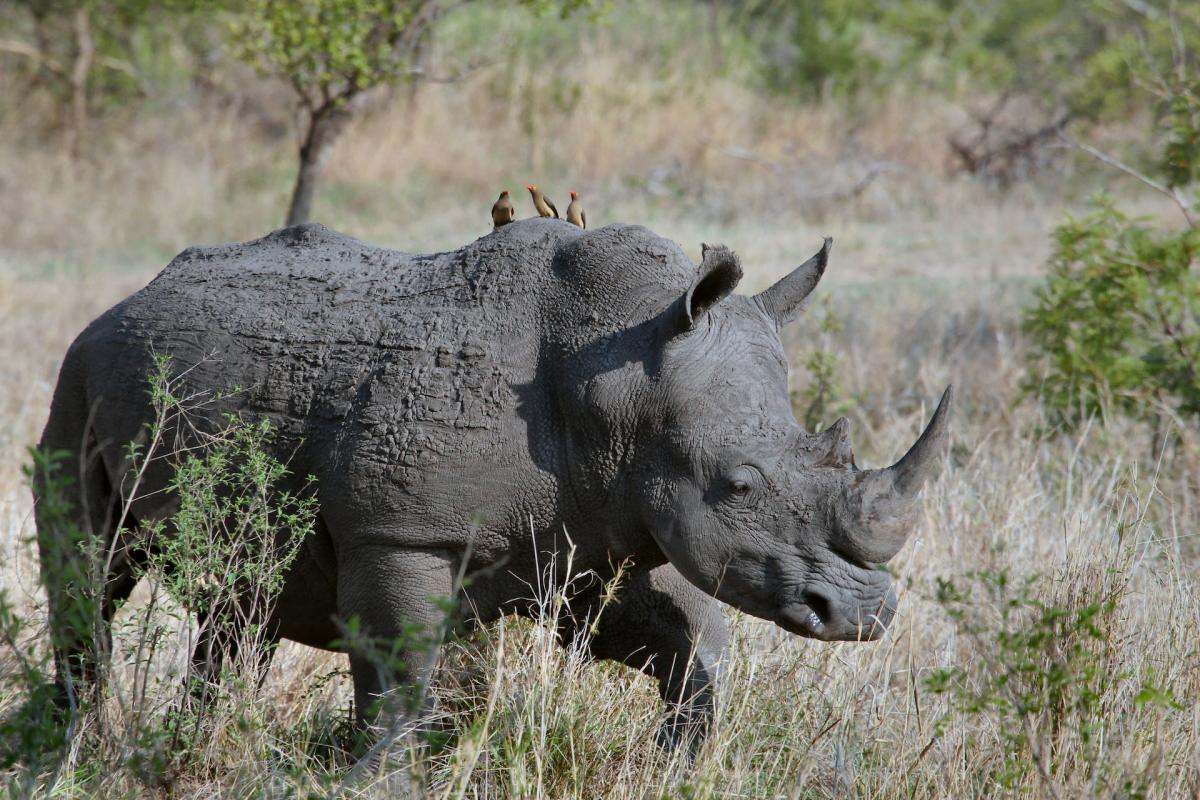
- Name: Black rhinoceros
- Scientific name: Diceros bicornis
- Conservation status:
The black rhinoceros, also known as the hook-lipped rhinoceros, is a species of African rhinoceros native to the eastern and southern parts of the continent, namely in Malawi, Kenya, Botswana, Mozambique, Tanzania, and South Africa, among other countries.
This animal is not black, nor is the white rhino white. In fact, it was most likely a misinterpretation of the Afrikaans word “wyd”, meaning “wide”, that resulted in this situation. Now, these subspecies are sometimes called square-lipper or hook-lipped rhinoceros to tell them apart.
7. Side-striped jackal
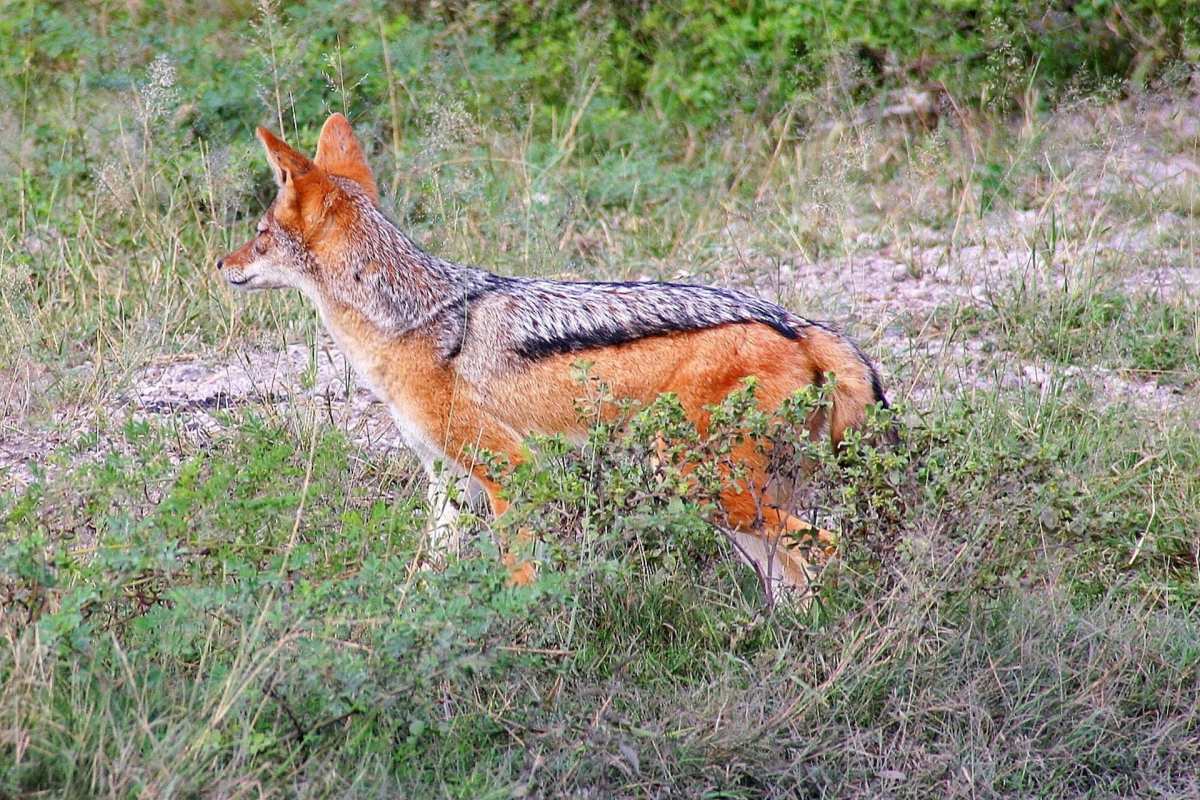
- Name: Side-striped jackal
- Scientific name: Lupulella adusta
- Conservation status:
The side-striped jackal is a species of canine native to central and southern Africa. It inhabits woodland and scrub areas and is a highly adaptable omnivore that will quickly change its dietary preferences depending on the area. Most of the time, it feeds on fruit, small mammals, invertebrates, and birds.
This jackal lives both on its own and in family groups of up to 7 members; each family is dominated by a breeding pair.
8. Spotted hyena
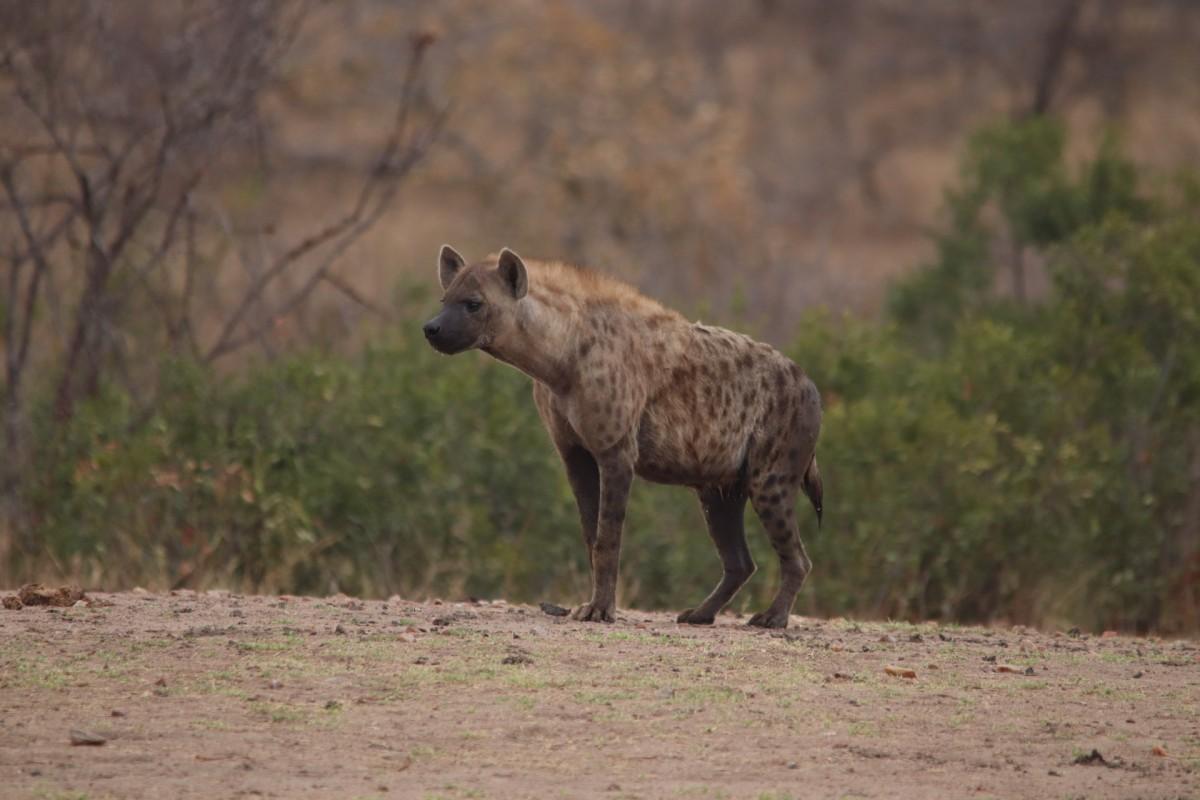
- Name: Spotted hyena
- Scientific name: Crocuta crocuta
- Conservation status:
The spotted hyena, widely known as the laughing hyena, is a large species of hyena native to sub-Saharan Africa. Thanks to its large numbers estimated between 27,000 and 47,000 individuals, its widespread range, and its opportunism and adaptability, this hyena is the most common large carnivore in Africa and is considered of least concern.
Contrary to popular belief, it is not primarily a scavenger, but rather a hunter; however, due to its versatility, it will not hesitate to feed on carrion.
9. African wildcat
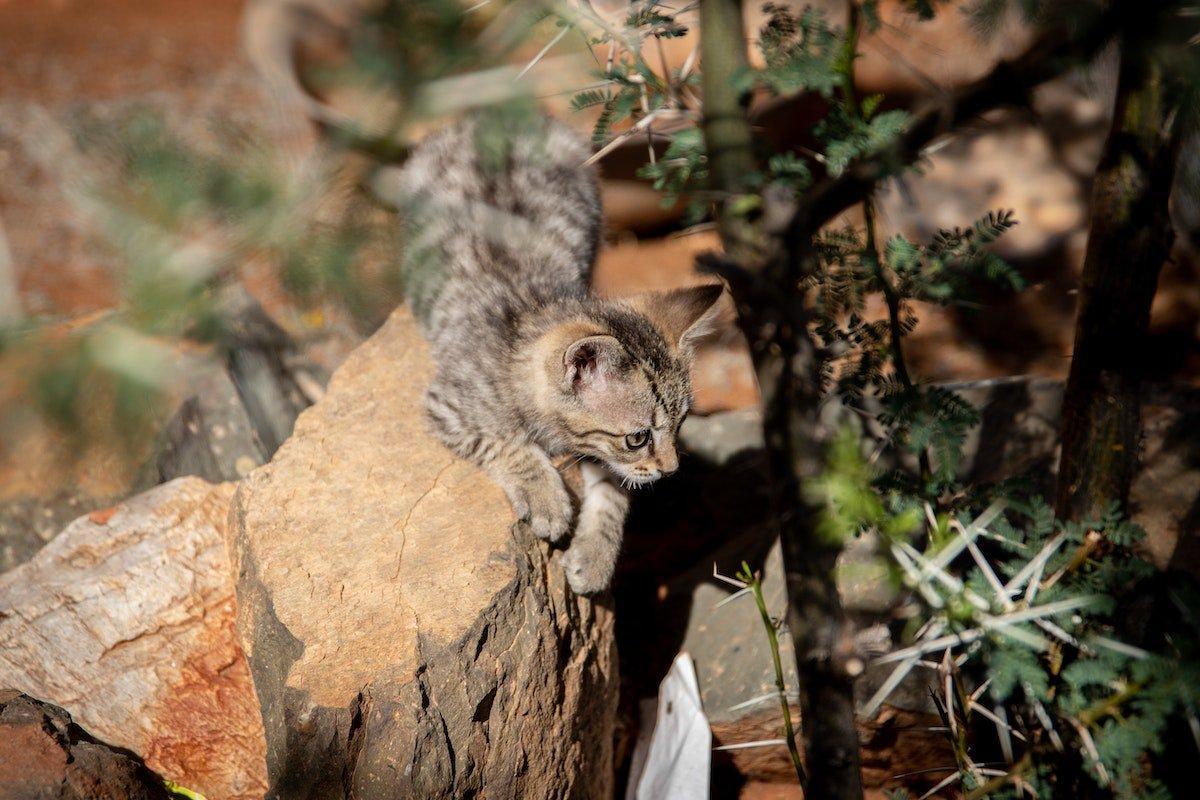
- Name: African wildcat
- Scientific name: Felis lybica
- Conservation status:
The African wildcat is a small species of wildcat native to Africa, as well as Central and West Asia. It is a subspecies of the wildcat and is listed as least concern. It inhabits hilly and mountainous landscapes, deserts, savannas, shrublands, and tropical and subtropical grasslands.
This cat might have been the earliest domesticated cat, as it was found in a burial site in Cyprus next to a human skeleton dating back to 9,500 years ago!
10. Caracal
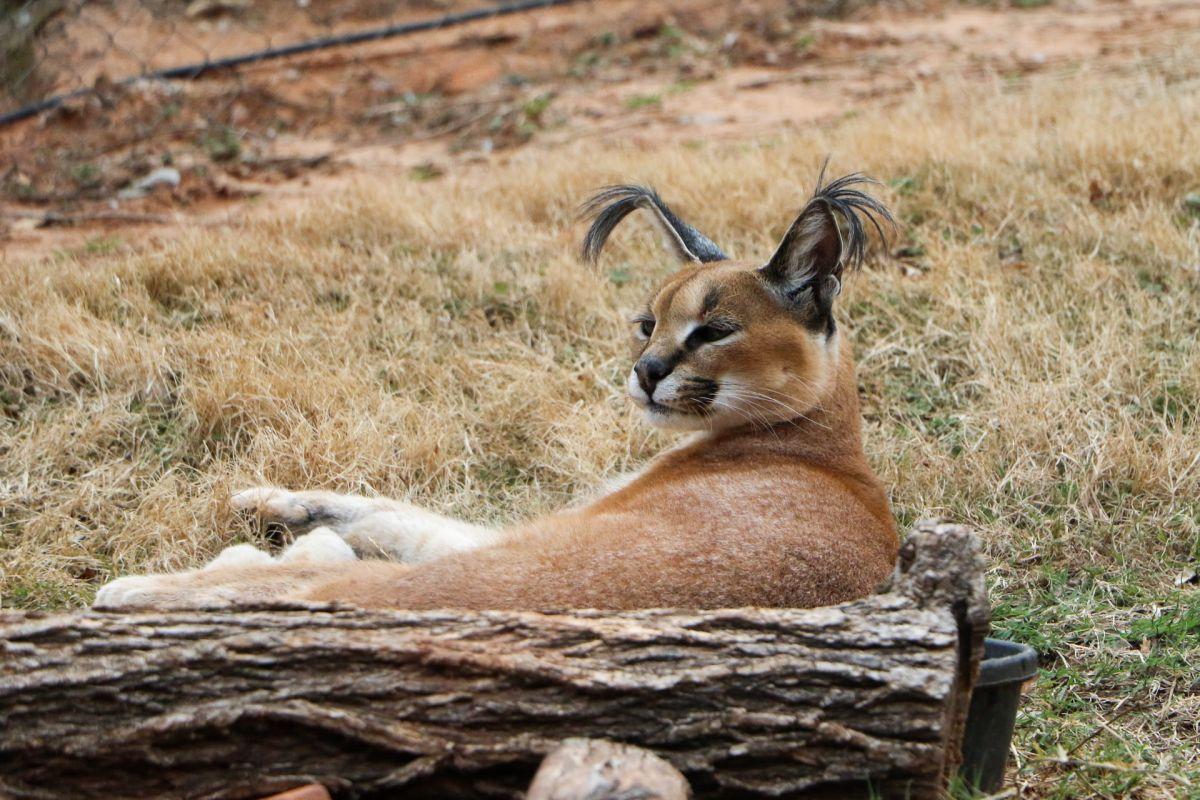
- Name: Caracal
- Scientific name: Caracal caracal
- Conservation status:
The caracal is a medium-sized species of wild cat native to Africa, the Indian subcontinent, Central Asia, and the Middle East. It has long ear tufts and a robust body and is an excellent swimmer, climber, and leaper that can catch birds in midair and jump higher than 3 m / 10 ft above the ground.
This wild cat is a carnivore and mainly preys on small mammals, rodents, and birds.
11. Serval
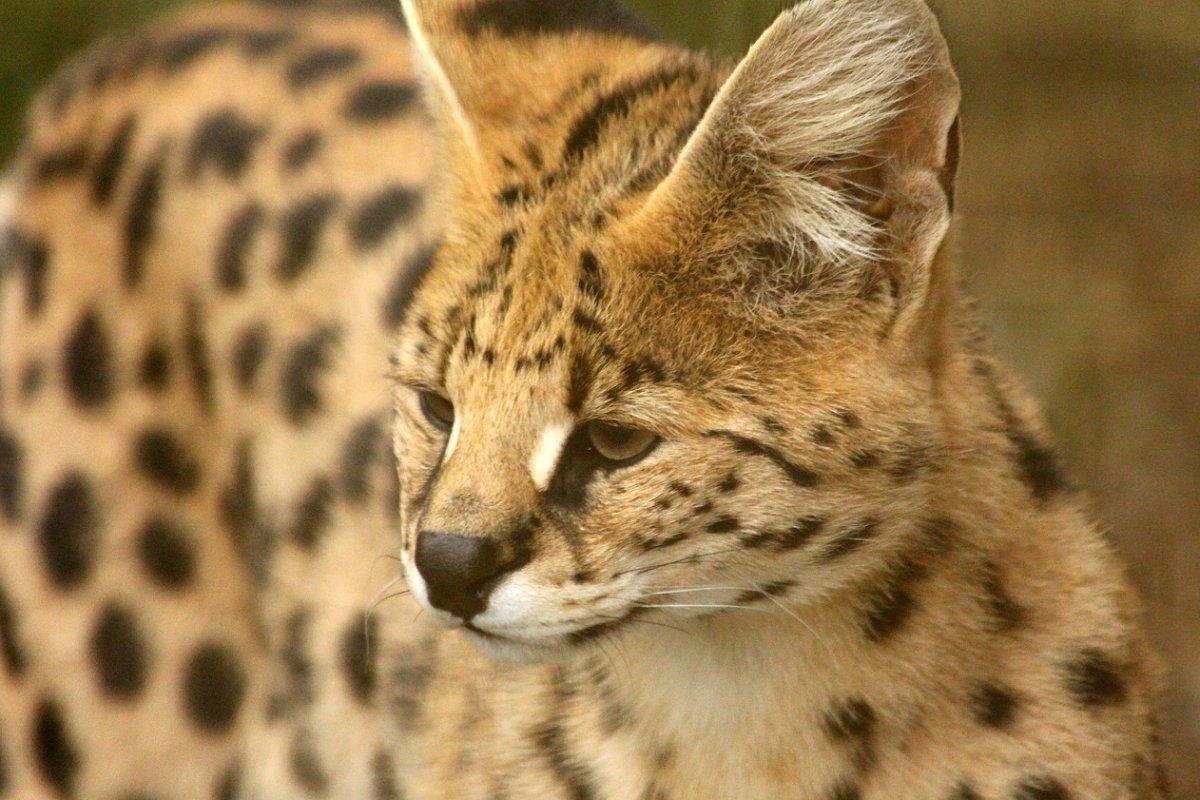
- Name: Serval
- Scientific name: Leptailurus serval
- Conservation status:
The serval is another wild cat species native to Africa. It is widespread in sub-Saharan countries, and mostly lives in protected areas, which is probably why it is still listed as least concern; in fact, its main threats include hunting for its fur and use in traditional medicine, persecution, and habitat degradation.
The serval has been interacting with humans since antiquity when it was depicted as a gift or a traded object in Egyptian art. Even now, some individuals are kept as pets, but ownership is of course regulated.
12. Spotted-necked otter
- Name: Spotted-necked otter
- Scientific name: Hydrictis maculicollis
- Conservation status:
The spotted-necked otter, also known as the speckle-throated otter, is a species of semi-aquatic mammal native to sub-Saharan Africa. It is quite small and lives in lakes and large rivers. It is very common across Zambia and in Lake Victoria but is absent in several suitable habitats such as the lakes and rivers of eastern Africa.
This otter mainly feeds on fish, small crustaceans, and frogs, and is active by day. It hunts by sight and dives in clearwater for less than 20 seconds.
13. Impala
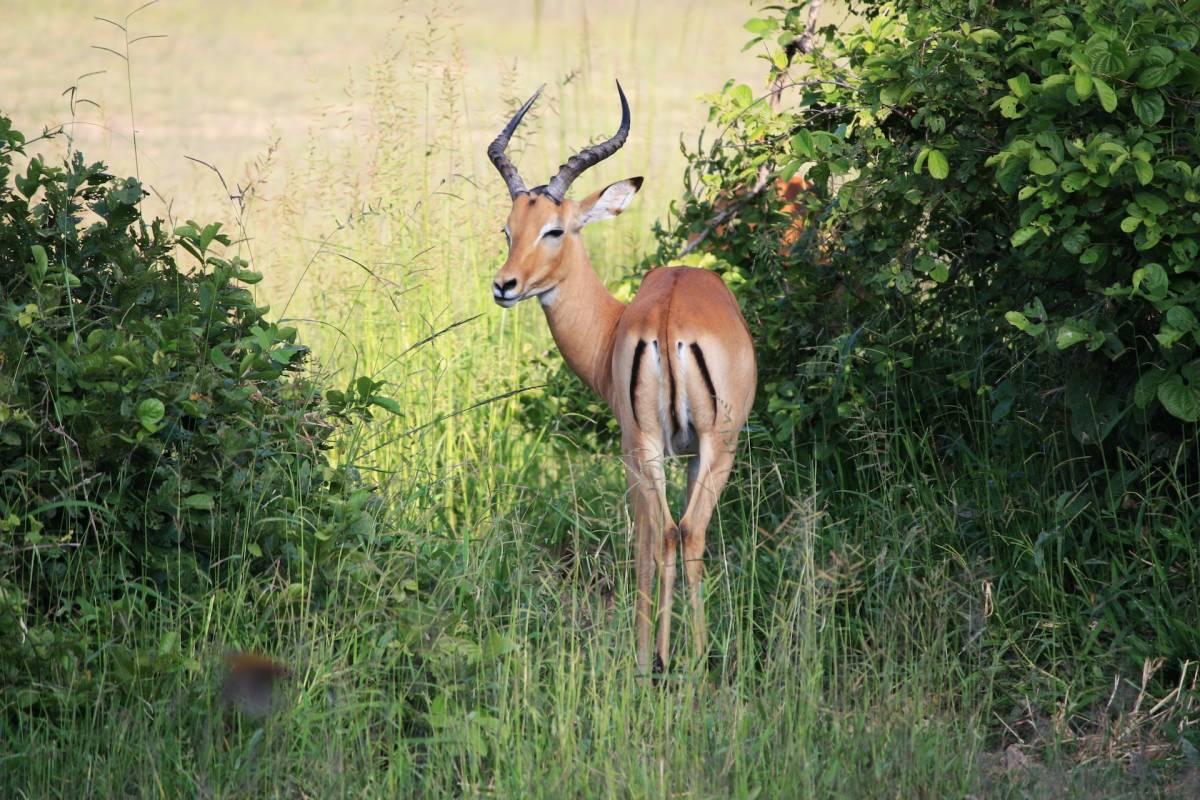
- Name: Impala
- Scientific name: Aepyceros melampus
- Conservation status:
The impala is a medium-sized species of antelope that can be found in southern and eastern Africa. It is further divided into two subspecies, the common impala and the black-faced impala, and inhabits woodlands and savannas, with shade and water availability.
This antelope is characterized by its spectacular leaps, up to 3 m / 9.8 ft high and 10 m / 33 ft long. It is an important source of food for many large carnivores in Africa, such as the lion, the cheetah, and the leopard.
14. Pallid harrier
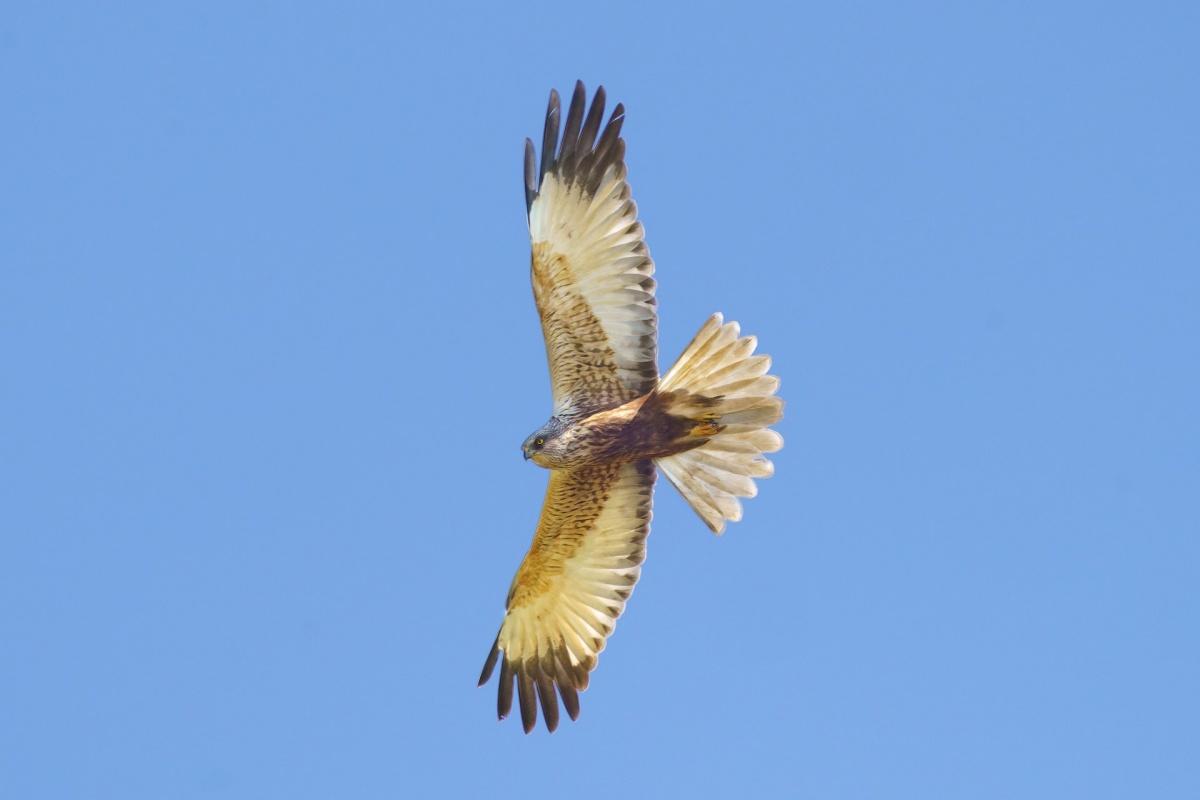
- Name: Pallid harrier
- Scientific name: Circus macrourus
- Conservation status:
Not many migratory birds can be found in Malawi: the country is at the northern edge of southern African migration paths, and at the southern edge of eastern African migration paths.
The pallid harrier, also known as the pale harrier, is one of them, however. It breeds in southern and eastern Europe, as well as Iran and Central Asia, and spends the winter in much warmer areas such as sub-Saharan Africa or southeastern Asia and India.
15. Striped polecat
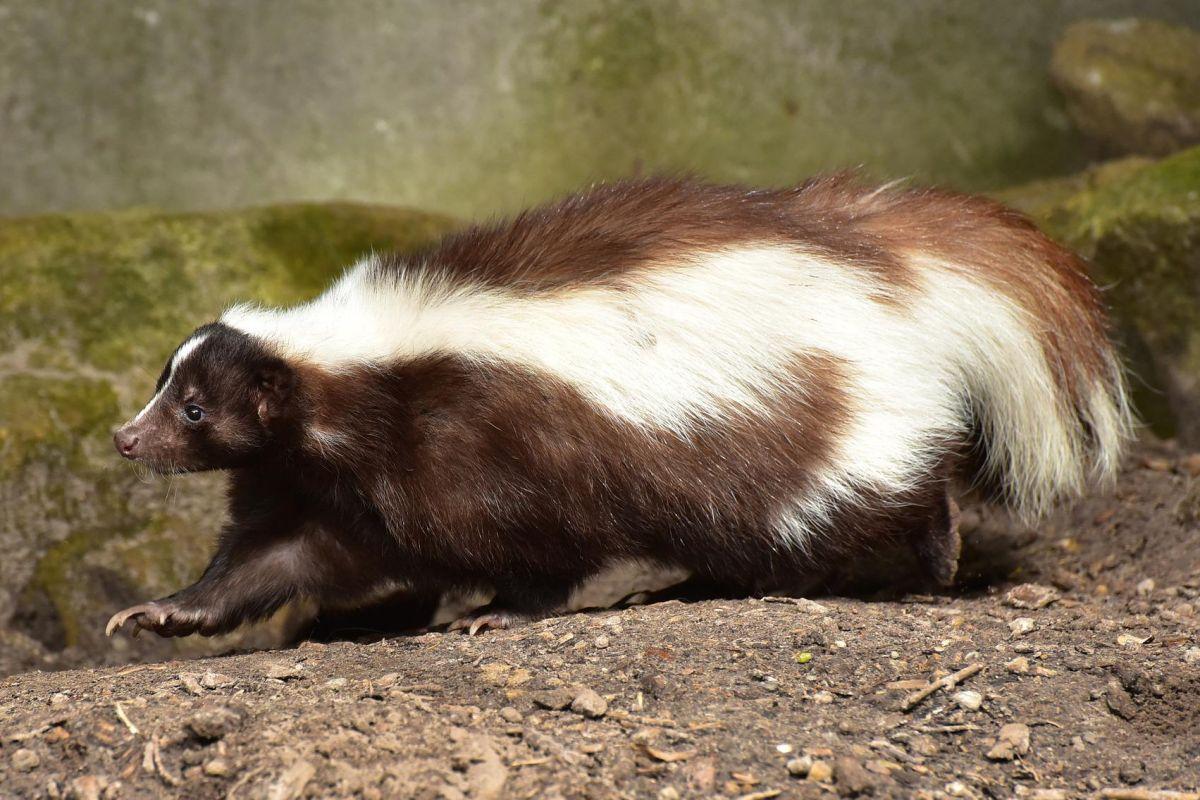
- Name: Striped polecat
- Scientific name: Ictonyx striatus
- Conservation status:
The striped polecat, also known as the Cape polecat, the African skunk, the zorilla, or the African polecat, is a species of mustelid that resembles a skunk, native to much of sub-Saharan Africa, except for the rainforest and tropical regions.
Its name “zorilla” comes from the Spanish word for fox, “zorro”. It inhabits arid and dry climates such as the open country and savannas of Central, Southern, and sub-Saharan Africa.
16. Nyala
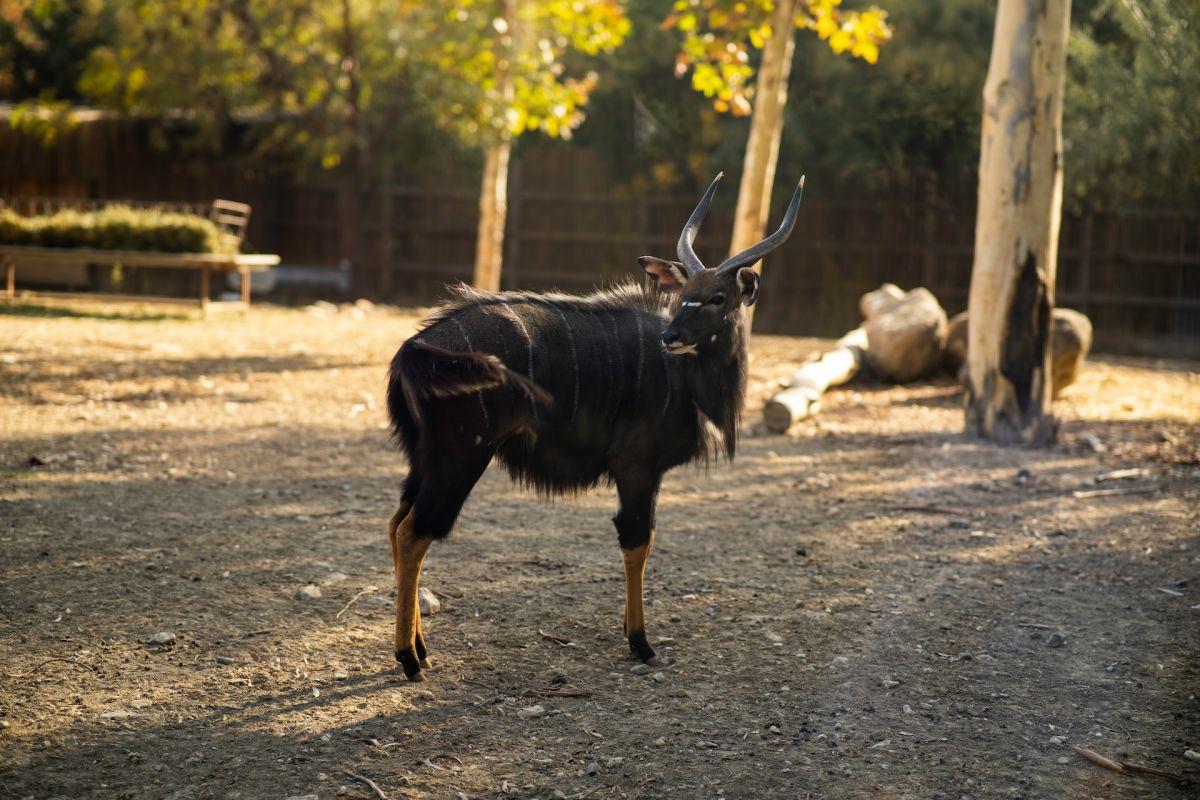
- Name: Nyala
- Scientific name: Tragelaphus angasii
- Conservation status:
The nyala, also known as the lowland nyala, is a species of spiral-horned antelope native to southern Africa. Not to be confused with the mountain nyala, its close relative living in Ethiopia, it is most active in the early morning and the late afternoon.
This antelope feeds on grasses, fruits and foliage, and stays near areas with bodies of water. It is not territorial, but instead pretty shy, and several individuals often share the same range.
17. Vervet monkey
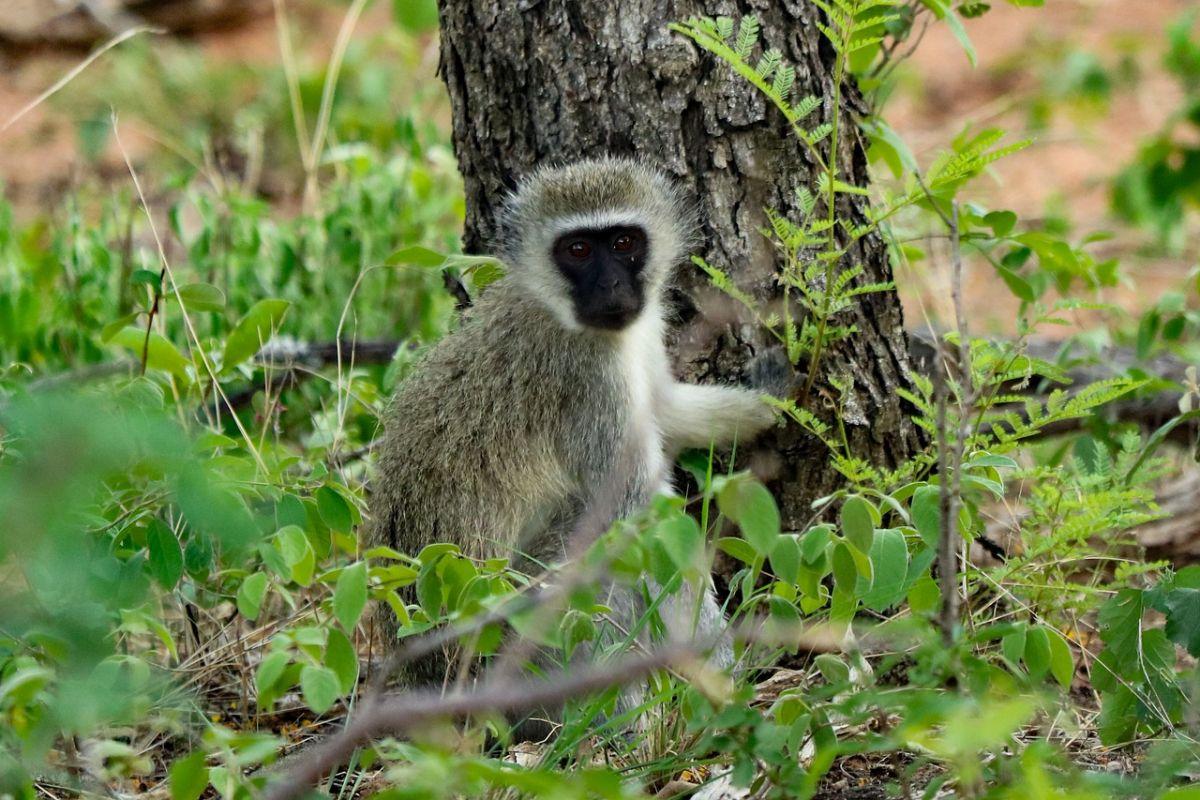
- Name: Vervet monkey
- Scientific name: Chlorocebus pygerythrus
- Conservation status:
The vervet monkey, also simply known as the vervet, is a species of Old World monkey native to eastern and southern Africa. It has also been introduced to other parts of the world, such as Cape Verde, Barbados, and Florida, and usually lives in groups of about 10 to 70 primates.
This monkey is mostly herbivorous, and has human-like characteristics, such as dependent and social alcohol use, anxiety, and hypertension!
18. Brown greater galago
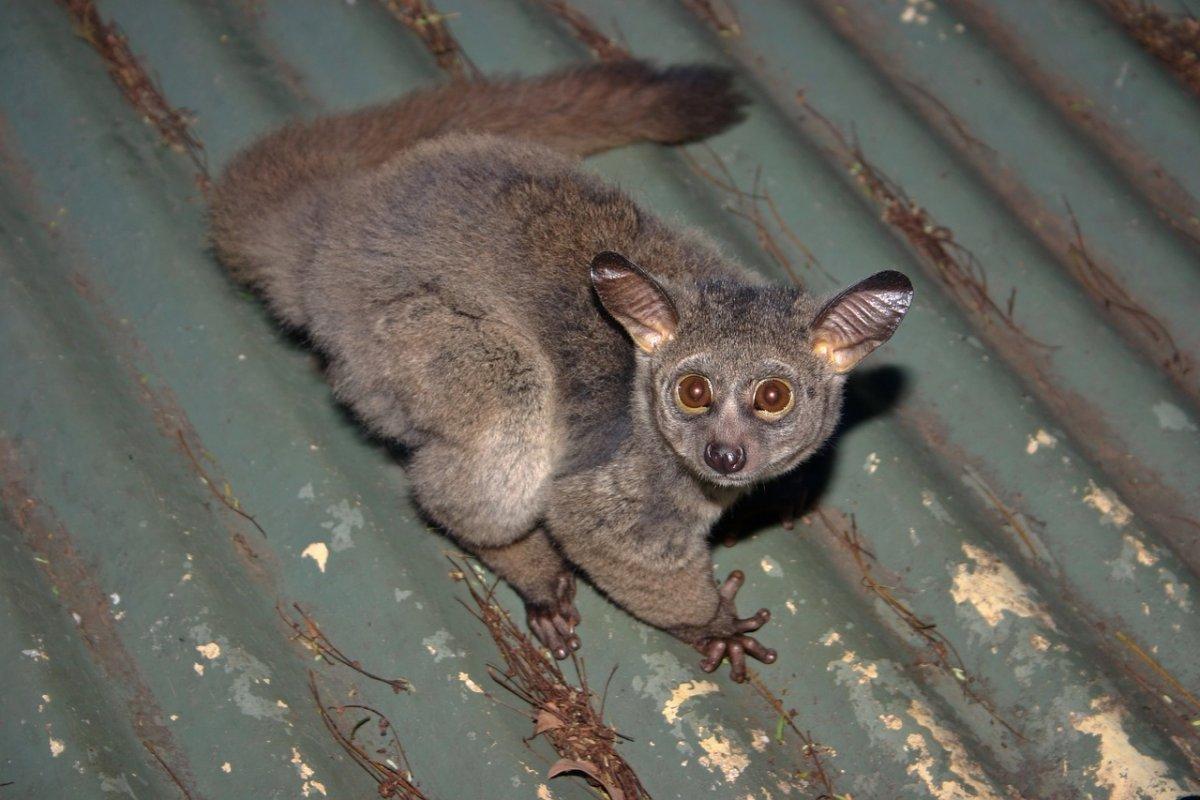
- Name: Brown greater galago
- Scientific name: Otolemur crassicaudatus
- Conservation status:
The brown greater galago, also known as the thick-tailed galago or the large-eared greater galago, is a species of nocturnal primate, and the largest of all galagos. Contrary to smaller galagos, it usually walks, runs, and climbs instead of leaping.
This primate has very large ears that can be moved independently and is fairly common within its range. It is solitary and lives in a home range of a few hectares.
—
So there you have them, these were my 18 Malawi wild animals. I hope you enjoyed this list and that you learned something new today.
In case you want to learn more about Malawi wildlife, feel free to keep reading, as I still have lots of things to tell you about:
Endangered Animals of Malawi
This is definitely the saddest part of the list, but it is very important to raise awareness. Because of this, let’s go through the list of endangered animals in Malawi.
Here are the animals in danger of extinction in Malawi.
- Labeo worthingtoni
- Chambo
- Sulphur head aulonocara
- Metriaclima koningsi
- Black rhino
- Hooded vulture
- and 19 more…
- Lappet-faced vulture
- Zambezi flapshell turtle
- Steppe eagle
- African savanna elephant
- Gray crowned crane
- and 22 more…
To see the full list of endangered species in Malawi, head over to the International Union for Conservation of Nature’s Red List.
What is the National Animal of Malawi?
The national animal of Malawi is Thomson’s gazelle.
Thomson’s gazelle is one of the most iconic and beautiful species of antelope in the world. It can reach outstanding speeds of 80 to 90 km/h / 50 to 55 mph, making it the fourth-fastest land animal, after the cheetah, the pronghorn, and the springbok.
There are about 550,000 Thomson’s gazelles left in the wild, and they are threatened by fire management, road development, and habitat modification; from 1978 to 2005, the population declined by 60 percent!
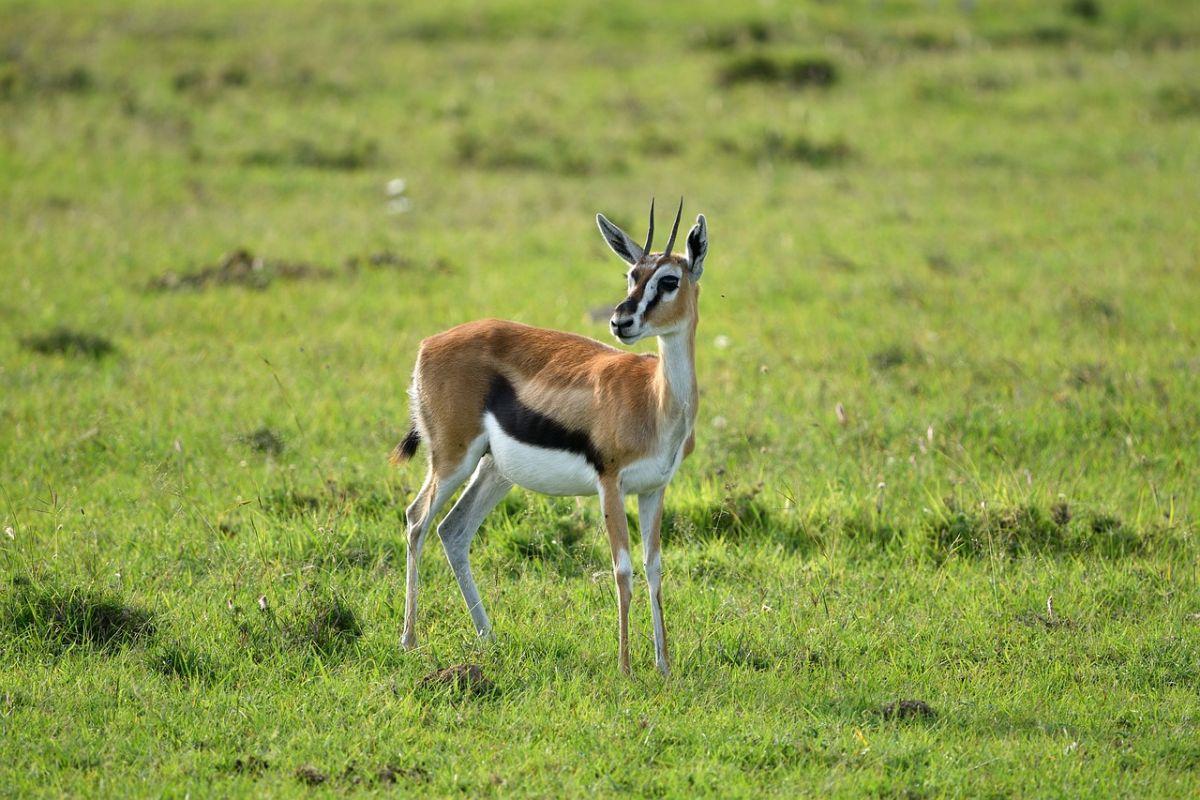
How Many Animals Native to Malawi?
What is the diversity of native animals in Malawi?
Let’s look at the total number of species of Chordata (mammals, birds, fishes, and reptiles).
Total number of animal species in Malawi: 1,536 (14,205 in total in sub-Saharan Africa)
More About Animals in the World!
Loved these Malawi animals facts? Want to see what animals live in other countries?
Then check out these posts:
Or click here to see ALL the facts up on the blog! Spoiler alert: there’s A LOT of them.
Share the knowledge! Click on the buttons below to share information about these famous animals that live in Malawi with your friends, and help them learn more about the world 🙂
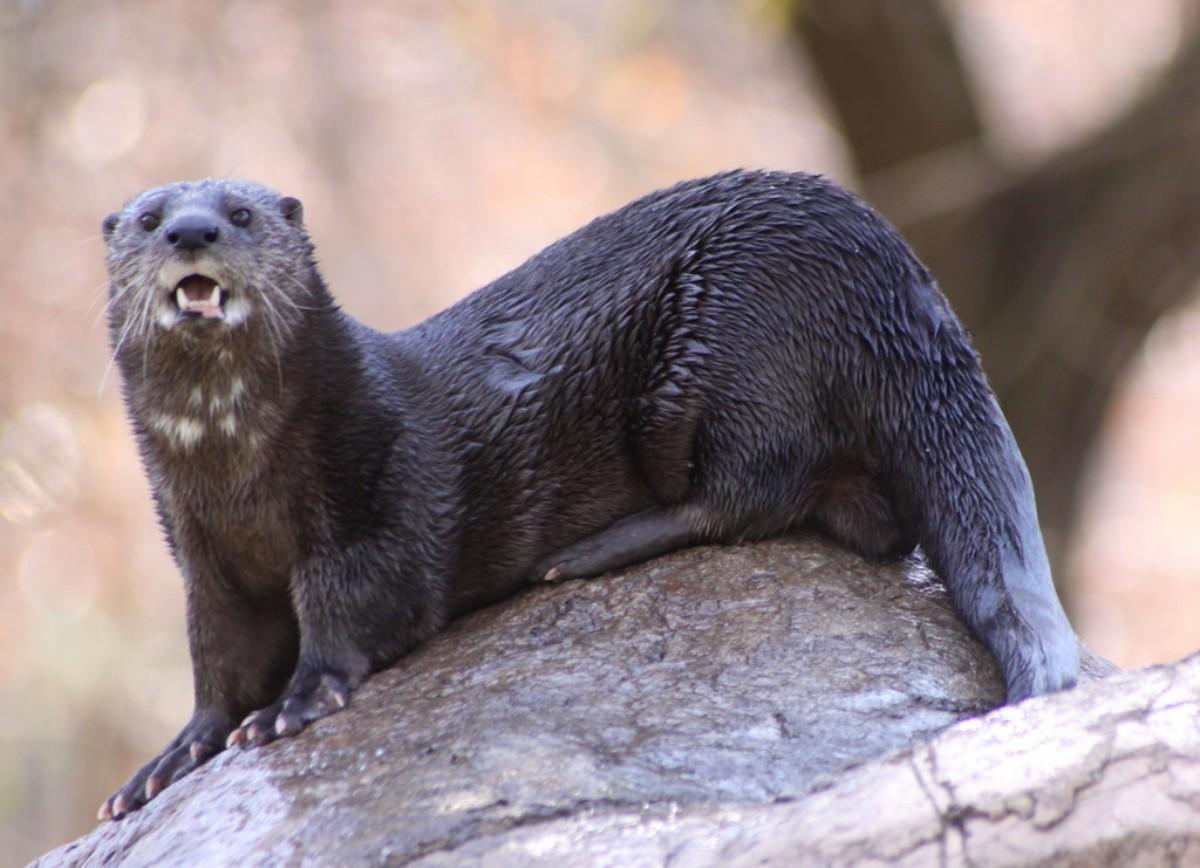

![30 Wild Animals in Russia [Wildlife in Russia]](https://www.kevmrc.com/wp-content/uploads/2022/10/30-wild-animals-in-russia.jpg)
![18 Wild Animals in Congo [Wildlife in Congo]](https://www.kevmrc.com/wp-content/uploads/2022/12/18-wild-animals-in-congo.jpg)
![13 Wild Animals in Nicaragua [Wildlife in Nicaragua]](https://www.kevmrc.com/wp-content/uploads/2022/08/13-wild-animals-in-nicaragua.jpg)